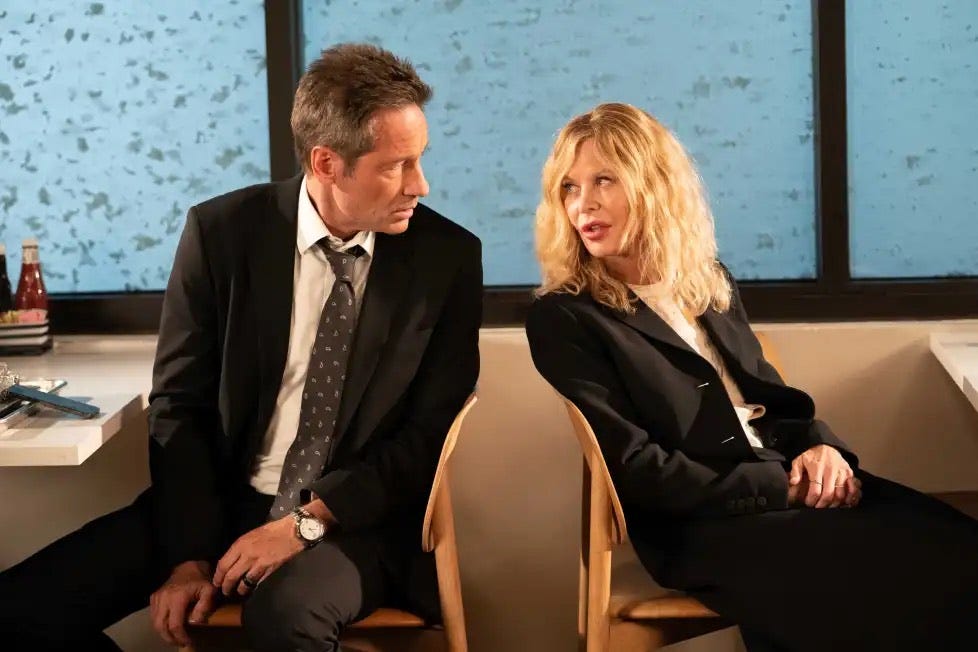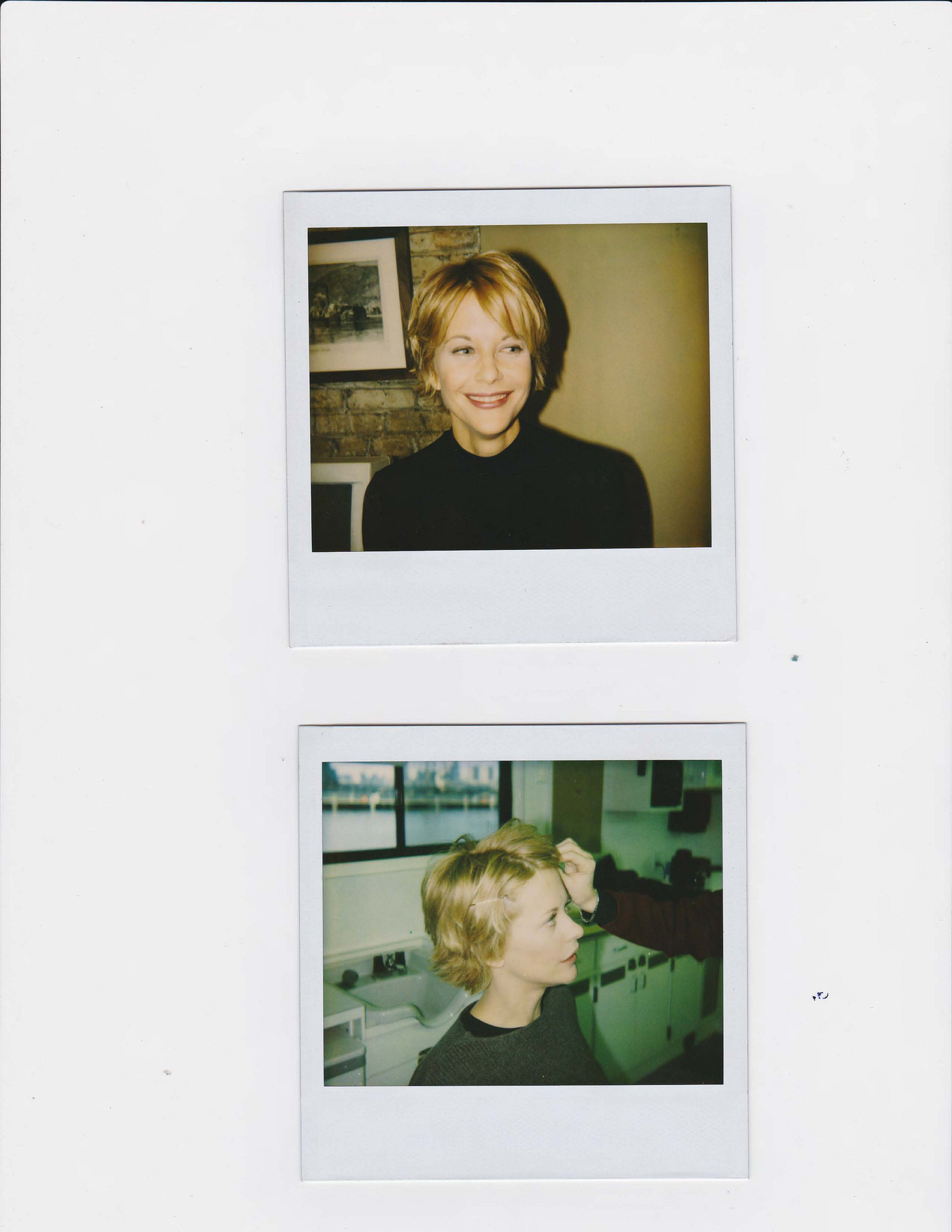
Meg Ryan was torn.
After filming her breakout role in 1989’s When Harry Met Sally, the sleeper-hit romantic comedy that made her a household name, Ryan sought to follow that success with something grittier and unexpected. But writer-director John Patrick Shanley, desperate to cast the rising star opposite Tom Hanks in the romcom Joe Versus the Volcano, urged her to take the sunnier path — of course, he was biased. In her audition, she out-performed other ingenues, as she had previously done while reading lines with Billy Crystal for When Harry Met Sally. Shanley was smitten.
“I read Julia Roberts. I read Diane Lane,” he recalled during an interview for my book I’ll Have What She’s Having: How Nora Ephron’s Three Iconic Films Saved the Romantic Comedy. “And Julia was incredible. It was before she got cast in Pretty Woman. Within a few months she was cast in that. Diane was great, and all kinds of people came in. And then Meg came in. And as soon as she started reading, I was like, nobody else can play this role. She was so charming, she was so fluid, she was so bold. She had no problem.”
Shanley had just won a screenwriting Oscar for Moonstruck and was hot-hot-hot at the time. Yet Ryan remained an elusive catch. Joe Versus the Volcano, Shanley’s criminally underrated directorial debut, told the story of Joe Banks (Hanks), a hapless office drone whose terminal illness — “brain cloud” is the diagnosis — liberates him to quit his job and see the world before he dies. The film required one actress to play three separate roles: DeDe, Joe’s mousy coworker; Angelica, an LA heiress and self-professed “flibbertigibbet”; and Patricia, a sailor equal parts smoldering and winsome.
“She seemed like somebody you might know who just happened to be very beautiful — and idiosyncratic at the same time,” Shanley said of Meg, telling me that he extended an offer right away. “And she took the weekend, I remember. Because there was another role that she kind of wanted to play, which was a very dark role. And that was always the thing with Meg, that here she was projecting this incredible, luminous, well-adjusted, ‘I love life’ persona. But inside she also was really aspiring to be edgy, and be dark. And thought that that side of her had not gotten its day in court. When her manager, I think it was, told me she was struggling over whether to do this or — I think it was Jacob’s Ladder — I just basically thought she was crazy. And I was deeply alarmed. Not that it meant something negative about her but that she might, in her aspiration to do something edgy and dark, choose this other film.”
Come Monday, Shanley breathed a sigh of relief: She’d chosen Joe. Yes, it was the sunnier route, but the safest? Hardly. The film flopped in theaters in 1990. (In a church the following year, Hanks joked: “Please, God, forgive me for Joe Versus the Volcano.”) Over time, however, it gained cult status, fortified by a life-affirming love story and the funny and sincere performances of two romantic leads who were so clearly M.F.E.O., a.k.a. Made For Each Other. Warning: Spoiler ahead.
As the 1990s progressed, Hanks and Ryan reunited with much stronger results at the box office, playing star-crossed soulmates in Nora Ephron’s timeless Sleepless in Seattle and You’ve Got Mail. The latter is the greatest romcom ever made. It was also the last time Hanks fell under Ryan’s spell onscreen. The pair spent roughly four blissful months together on location in 1998; by then, Hanks had scored two Best Actor Oscars, back-to-back, for dramatic turns in Philadelphia and Forrest Gump. While he easily zigged and zagged across genres, always playing the Everyman in extraordinary circumstances, Ryan struggled to break free from the category — Love — that had come to define her. Love was her brand. Her bread and butter. No one did it better, and Hanks told me so himself, musing, “you better be on your toes working with Meg. You better be willing to pony up the same amount of cash that she’s bringing to the game. Otherwise, you’ll get dusted. You’ll lose. You got to be there.”
But Love earned half of his $20 million paycheck per movie. Love did not win coveted gold statuettes, or Cool Kid credibility. Love, a serious business, the most vital force in this broken world, was considered sappy, especially if there were jokes and nobody died at the end. (The critical establishment largely agreed; You’ve Got Mail, which appealed to women in flyover states — the horror! — collected begrudging reviews.)
Love did not contain Ryan’s multitudes, as an artist drawn to both the light and the dark, and as a wife and mother married to a rascal with a wandering eye. Though she and Ephron got along famously, Meg demanded more of the filmmaker on You’ve Got Mail than she had on Sleepless in Seattle. She insisted that Kathleen Kelly wield a knife at Joe Fox during their book-party encounter. She did deep character work on Kathleen and came up with the idea that her bookish alter ego’s dead mother, the enchanting Cecilia, loved to twirl her mini-me at The Shop Around the Corner. As a result, Ephron tweaked the film’s saddest scene — Kathleen shutting down Cecilia’s bookstore for good — to add the ghostly projection of the Kellys twirling in rosier times.
Ryan, meanwhile, resisted Ephron’s efforts to smooth out and lengthen her iconic Sally Hershberger haircut and triumphed in her battle to wear a modern, muted greige Marc Jacobs dress in the Riverside Park finale. For another scene, she reluctantly agreed to slip on a “jumper” layered with a prim turtleneck, a no-fuss utilitarian look befitting a children’s book guru. “I think she was getting to a point, really, where she was beginning to feel ‘I don’t know if I still want to be Meg Ryan,’” Albert Wolsky, You’ve Got Mail’s elegant costume designer, observed in I’ll Have What She’s Having. “You know, it was a funny period for her, where she began to think, ‘How long can I play these ingénue parts?’”

Soon her wholesome image came apart at the seams. Ryan fell for Russell Crowe on the set of their Y2K action flick Proof of Life, and when the tabloids got wind of the whirlwind show-mance, they made Ryan the heartless villain and her then-husband, Dennis Quaid, the jilted hero. Later, she made some movies that tested the boundaries of her fraying America’s Sweetheart persona, including Jane Campion’s psychological thriller In the Cut, but her fans rejected them. People mocked her changing visage without pausing to consider the industry-wide ageism that pushed Ryan and her peers to sample Botox in the first place. She pulled away from the spotlight, adopted a daughter named Daisy (the friendliest flower), and channeled her creative energies into photography and other endeavors. Gradually, as Millennial nostalgia blossomed around her legacy in romantic comedy (#MegRyanFall, amirite?), the erstwhile romcom queen inched closer and closer toward the throne that has been vacated since she left it. In 2019, Ryan showed up at the 30th anniversary screening of When Met Sally, catching me off guard. There she was, exactly as we remembered her, radiating joy and chicness in tasteful neutrals. She smiled for photos alongside the romcom’s director, Rob Reiner, and Crystal, her co-star, both of whom were perennial participants at tributes such as those. But never Meg. (Why not Meg?)
On Friday of this week, her first romantic comedy in years enters theaters. It’s called What Happens Later — my Bravo-addled brain keeps wanting to retitle it Watch What Happens Live — and she is the director, the co-writer and leading lady. Her leading man, David Duchovny, accepted the challenge to share the screen with her. She no doubt kept him on his toes and improved his game. The co-stars, each in their early 60s, play exes who reconnect at an airport when a snowstorm delays their flights. He’s anxious; she’s a free spirit; the spark persists. Duchovny, formerly a quiet revelation in the overlooked gem Return to Me (2000), wrestled with a sense that he and Ryan had aged out of a genre dominated by actors in their 20s and 30s. (Note: The growing excitement over Glen Powell and Sydney Sweeney’s Anyone But You two-hander, out in December.)
“They can’t go through those younger romcom moves — they can’t appear stupid or stunted,” Duchovny said of their characters in The New York Times. “And yet they can’t also be jaded or boring. It was really that dance of, how do we make it legitimate for adults?” Plus, he added, “There’s something in us that gets angry when we see people who are old hoping, you know? … That’s the resistance that we push against in the movie. But lo and behold, we have The Golden Bachelor now to show us the way.”
Ryan began working on the screenplay after breaking her engagement to musician John Mellencamp four years ago. She was interested in old flames, past regrets and the kind of affection that lasts forever and finds a way of circling back.
“There’s a perspective you have when you’re older, about love,” Ryan, in promo mode, told Variety. “It’s different than puppy love. You slowly learn that love is easy, while relationships are hard.”
In the grand tradition of the late Nora Ephron, to whom Ryan dedicated What Happens Later, she eschewed the bright, shiny objects of youth in favor of a bittersweet romance for grownups — done her way, on her terms. And now, like a supporting wingperson within the Ephron Cinematic Universe, I must hereby quote myself back to myself: “There is still nobody like Meg,” I once opined. “They are still looking for the next Meg Ryan to replace the real Meg Ryan. That’s what it means to be an original.”
You can’t squeeze original into a box.




What, no mention of French Kiss? Meg & Kevin Klein in Paris, then on to the Côte d’Azur? C’est dommage...🥰
Thank you for saying that You've Got Mail is the greatest romcom of all-time! I see so many other films being called that – even other Nora Ephron films – but I really do think it's the best.